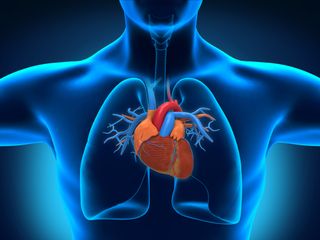
What the Heck Is ... Transcatheter Aortic Valve Replacement?

Dr. Juan Crestanello is a cardiothoracic surgeon at The Ohio State University Wexner Medical Center. He contributed this article to LiveScience's Expert Voices: Op-Ed & Insights.
Transcatheter aortic valve replacement is a life saving alternative for patients at high risk for traditional aortic valve surgery. In a traditional aortic valve replacement surgery, your aortic valve is replaced with a different valve — mechanical or tissue. This procedure may be necessary if you have a valve defect or disease, or another heart or vascular condition. The purpose of the procedure is to improve blood flow through your heart, improving symptoms such as chest pain and shortness of breath.

This kind of procedure used to be open-heart surgery, meaning patients who were more frail or sick were not candidates. But transcatheter aortic valve replacement is now helping those patients who may not qualify for open-heart surgery.
Since 2011, Ohio State's Wexner Medical Center has been one of only a few centers in its region that offer this cutting-edge alternative for patients who are considered inoperable or at high risk for conventional surgery. The procedural outcomes are comparable to those of conventional surgery — improved quality of life for patients who previously suffered from debilitating shortness of breath, chest pain and/or fatigue. As a result of the minimally invasive approach, there are smaller incisions, reduced hospital stays and shorter recovery times.
Read more about the technique in An Expanding Alternative to High-Risk Heart Valve Surgery (Op-Ed).
The author's most recent Op-Ed was "An Expanding Alternative to High-Risk Heart Valve Surgery." The views expressed are those of the author and do not necessarily reflect the views of the publisher. This version of the article was originally published on LiveScience.
Sign up for the Live Science daily newsletter now
Get the world’s most fascinating discoveries delivered straight to your inbox.
Most Popular


